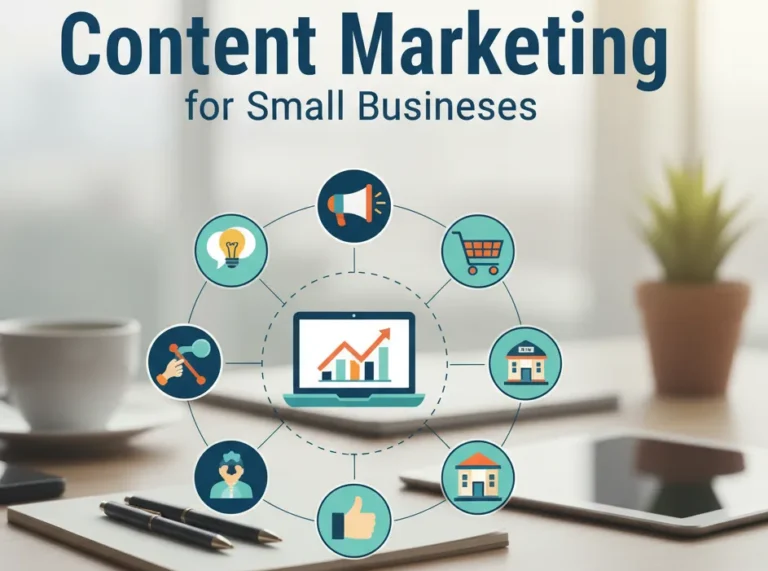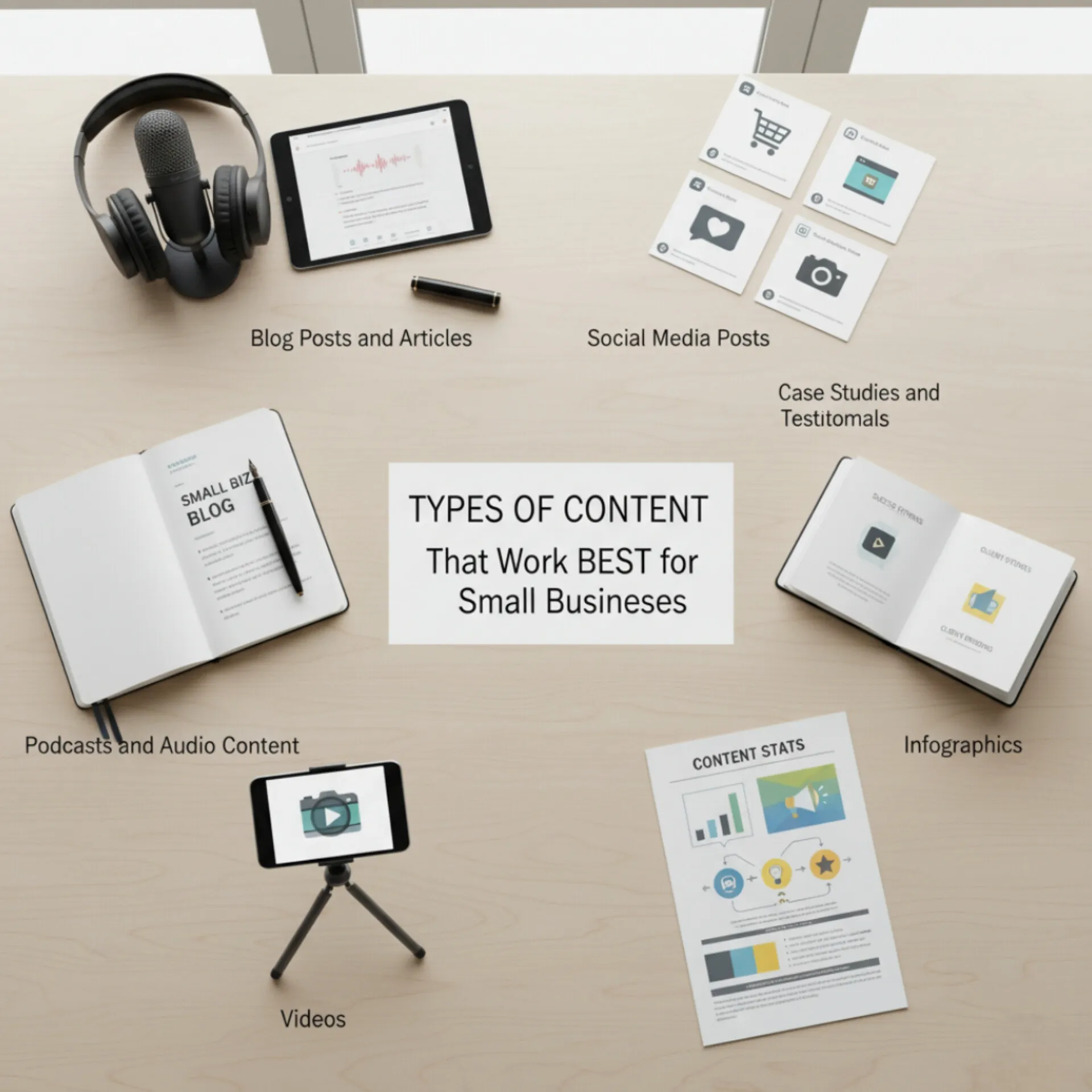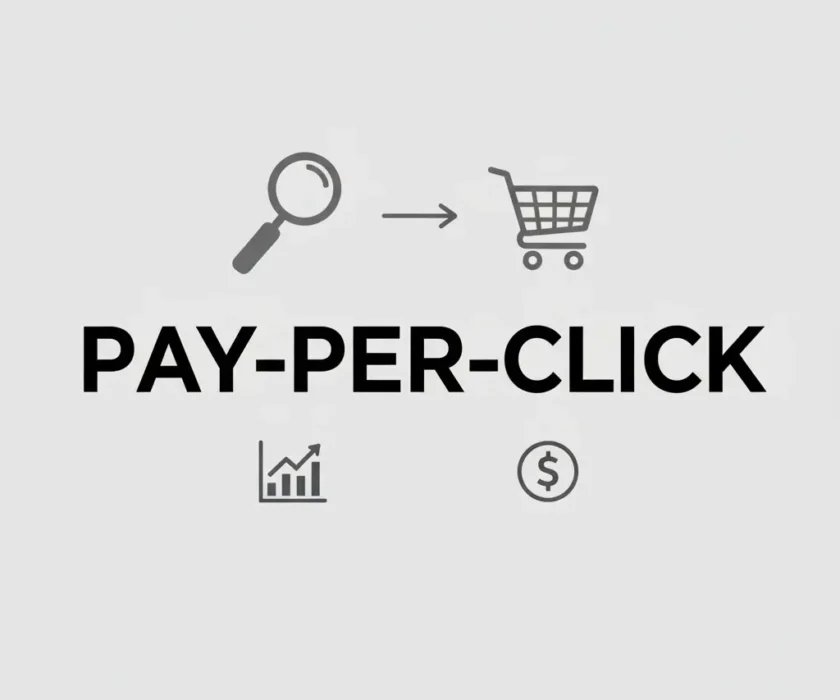- What Is Content Marketing and Why It Matters
- Why Content Marketing Is Crucial for Small Businesses
- 1. Build Brand Awareness
- 2. Establish Authority and Credibility
- 3. Drive Traffic and Sales
- 4. Improve Local SEO
- 5. Foster Community Engagement
- How to Develop a Small Business Content Marketing Strategy
- 1. Define Your Audience
- 2. Set Clear Goals
- 3. Create a Content Calendar
- 4. Choose the Right Channels
- 5. Repurpose and Reuse Content
- 6. Integrate Storytelling
- Types of Content That Work Best for Small Businesses
- 1. Blog Posts and Articles
- 2. Videos
- 3. Infographics
- 4. Social Media Posts
- 5. Case Studies and Testimonials
- 6. Podcasts and Audio Content
- Tips for Creating Engaging, High-Performing Content
- Best Tools for Small Business Content Marketing
- How to Measure and Optimize Your Content Strategy
- 1. Monitor Key Metrics
- 2. Conduct A/B Testing
- 3. Collect Audience Feedback
- 4. Review and Update Regularly
- 5. Optimize for Results
- Key Takeaways: Building a Sustainable Content Strategy
Welcome to the Ultimate Guide to Content Marketing for Small Businesses — your complete roadmap to growing online with powerful, cost-effective strategies. In today’s competitive digital landscape, content marketing for small businesses isn’t just an optional tactic — it’s a vital growth engine. Whether you’re a local shop, a startup, or a service provider, a strong content strategy helps you build trust, attract new customers, and stand out online.
This guide covers everything you need to know — from understanding your audience to creating engaging, SEO-friendly content that drives measurable results. You’ll also discover practical tools and tactics that simplify your workflow and make your marketing more effective.
What Is Content Marketing and Why It Matters
Content marketing is the practice of creating and sharing valuable, relevant, and consistent content to attract and retain a target audience. Unlike traditional advertising, it doesn’t interrupt — it educates, informs, and builds a relationship with potential customers.
For small businesses, content marketing is especially powerful. It helps you:
- Build brand awareness within your local and online communities.
- Establish credibility and trust by sharing expertise.
- Boost SEO rankings and increase website traffic.
- Drive customer engagement and conversions.
When customers trust your content, they’re more likely to trust your brand — and that’s what leads to sustainable business growth.
Why Content Marketing Is Crucial for Small Businesses
1. Build Brand Awareness
Publishing consistent, helpful content — whether it’s a blog post, video, or infographic — helps customers recognize and remember your business. Over time, this familiarity turns into trust and loyalty.
2. Establish Authority and Credibility
When you provide actionable advice and insights, you position your business as an expert in your field. This authority differentiates you from competitors and builds long-term customer confidence.
3. Drive Traffic and Sales
Content that promotes your offers, shares local news, or showcases customer stories can increase foot traffic and sales. For example, a local café sharing seasonal recipes or event updates keeps its audience engaged both online and offline.
4. Improve Local SEO
By naturally integrating local keywords (like “best florist in Toronto” or “SEO consultant in Berlin”) into your content, you improve visibility in local search results. This makes it easier for nearby customers to find your business on Google.
5. Foster Community Engagement
Great content connects your business with your community. Sharing local stories, testimonials, or collaborations strengthens emotional bonds and makes customers feel part of your journey.
How to Develop a Small Business Content Marketing Strategy

A clear strategy ensures your efforts are consistent and measurable. Follow these steps to build a content marketing plan that fits your goals and resources:
1. Define Your Audience
Understand who your ideal customers are — their age, interests, pain points, and online habits. Use tools like Google Analytics and Meta Insights to gather demographic and behavioral data.
2. Set Clear Goals
Decide what you want to achieve — increased website traffic, higher engagement, more sales, or stronger brand awareness. Specific goals guide your content creation and make performance easier to track.
3. Create a Content Calendar
Plan your publishing schedule around important dates, holidays, and seasonal trends. A content calendar keeps you organized and ensures consistent posting. Platforms like Hootsuite and Trello make planning simple.
4. Choose the Right Channels
Select the platforms where your audience is most active. For instance:
- Instagram & TikTok for visuals and storytelling.
- LinkedIn for professional insights and B2B networking.
- Your website blog for SEO and long-form educational content.
5. Repurpose and Reuse Content
Turn one idea into multiple pieces of content. A blog post can become an infographic, a video, or a carousel post. Repurposing saves time while maximizing reach.
6. Integrate Storytelling
Tell stories that humanize your brand. Share behind-the-scenes moments, customer success stories, or your business journey. Storytelling builds emotional connection and authenticity.
Types of Content That Work Best for Small Businesses

1. Blog Posts and Articles
Blogging remains one of the best ways to improve SEO and share expertise. Write about topics your customers care about — how-tos, product comparisons, or local news. Use SEO tools like Yoast SEO or Rank Math to optimize each post.
2. Videos
Video marketing is highly engaging and effective for conversions. Create short-form videos for social media or longer ones for YouTube and your website. Show product demos, customer reviews, or behind-the-scenes clips to build authenticity.
3. Infographics
Visual data is easy to digest and shareable. Tools like Canva and Visme help you design infographics that simplify complex topics — perfect for social media and blog use.
4. Social Media Posts
Use social platforms to connect directly with your audience. Post consistently, engage in the comments, and highlight your community involvement. Pair posts with strong visuals and concise captions.
5. Case Studies and Testimonials
Showcase real success stories from customers who have benefited from your product or service. These create social proof and increase trust among new visitors.
6. Podcasts and Audio Content
Podcasts are excellent for thought leadership and long-form storytelling. They allow your audience to engage with your brand during commutes or daily routines.
Tips for Creating Engaging, High-Performing Content
- Focus on Local Relevance: Mention your area, community events, or local news to strengthen your connection with nearby customers.
- Use Local Keywords Naturally: Include terms like “plumber in Chicago” or “digital marketing agency in Vancouver” to rank higher in local searches.
- Collaborate with Local Influencers: Partner with community leaders or micro-influencers to increase credibility and expand reach.
- Encourage User-Generated Content: Ask customers to tag your brand in posts or share their experiences. UGC adds authenticity and builds loyalty.
- Keep It Mobile-Friendly: Ensure your content looks great and loads fast on phones. Over 70% of small business web traffic comes from mobile users.
Best Tools for Small Business Content Marketing
You don’t need an enterprise budget to run an effective content strategy. Here are affordable and free tools that can make your marketing easier:
Purpose | Tool | Benefit |
Content design | Canva | Create professional visuals, infographics, and social media posts easily |
Social media management | Hootsuite or Buffer | Schedule posts, track engagement, and manage multiple platforms |
Local SEO | Google My Business, Moz Local, BrightLocal | Boost visibility in local searches and manage business listings |
Content organization | Notion, Trello, ClickUp | Plan, collaborate, and track your content workflow |
Analytics | Google Analytics, Ahrefs, Semrush | Measure traffic, engagement, and keyword performance |
Email marketing | Mailchimp or Sender | Build and automate newsletters and promotional emails |
Images | Unsplash, Pexels | Access free, high-quality visuals for blogs and social posts |
By combining the right strategy with these tools, you can scale your marketing efficiently and stay consistent.
How to Measure and Optimize Your Content Strategy
Tracking performance helps you understand what’s working — and what’s not. Regular analysis ensures continuous improvement.
1. Monitor Key Metrics
Track engagement (likes, shares, comments), website visits, conversions, and sales. Use Google Analytics or your social media insights to gather data.
2. Conduct A/B Testing
Experiment with different headlines, visuals, or CTAs to discover which version drives more engagement or conversions.
3. Collect Audience Feedback
Use polls, surveys, and comments to understand what your audience enjoys most. This feedback helps refine your content strategy.
4. Review and Update Regularly
Refresh outdated blog posts, update visuals, and re-share evergreen content. Search engines reward active, updated websites.
5. Optimize for Results
Use your analytics insights to double down on high-performing content types. Repurpose your best pieces into new formats to maximize impact.
Key Takeaways: Building a Sustainable Content Strategy
- Start small, stay consistent: Regular posting builds momentum and brand visibility.
- Focus on value, not volume: Quality content that helps your audience will always outperform quantity.
- Engage with your community: Respond to comments, collaborate locally, and make your audience feel part of your story.
- Measure, learn, and improve: Data-driven decisions keep your strategy effective over time.
Need help building a results-driven content strategy for your business?
Explore our digital marketing services and discover how we can help you grow through effective SEO and content marketing.
Content marketing for small businesses is more than just publishing — it’s about building lasting relationships with your audience. By providing valuable information, optimizing for search engines, and engaging authentically, your business can attract loyal customers and grow sustainably.
Start by defining your audience, setting clear goals, and using the right mix of content types. Leverage tools like Canva, Google My Business, and Hootsuite to streamline your efforts, and don’t forget to measure performance regularly.
With a strong, flexible content strategy in place, your small business can thrive — locally and online — for years to come. Ready to take your marketing to the next level? Check out our [Ultimate Guide to Digital Marketing for Small Businesses] for a complete roadmap to building visibility, credibility, and long-term success.


